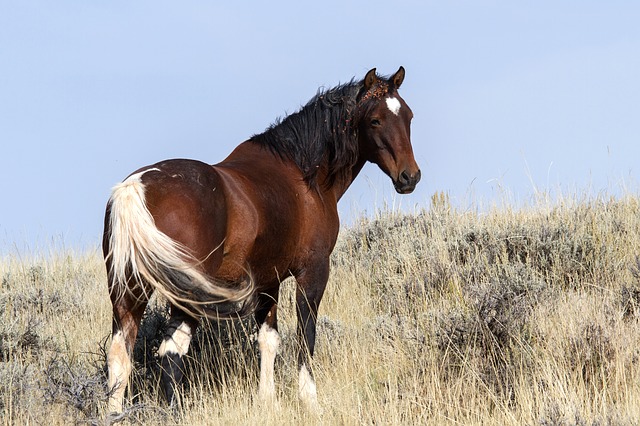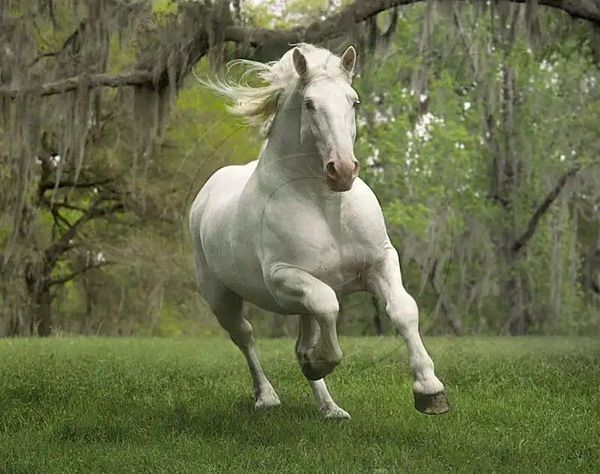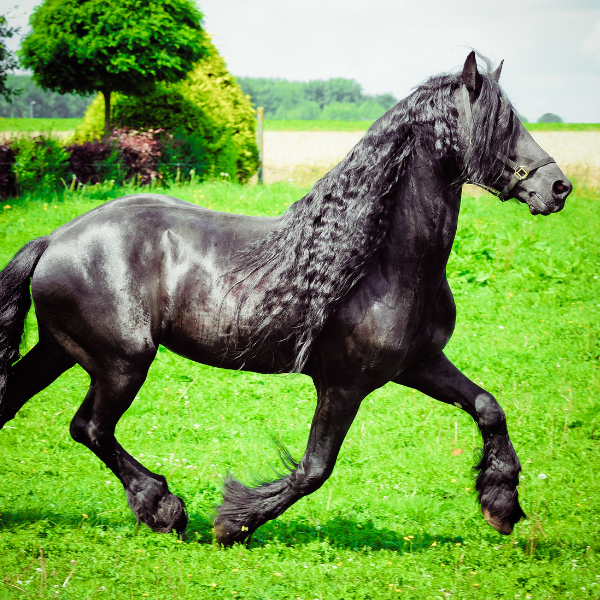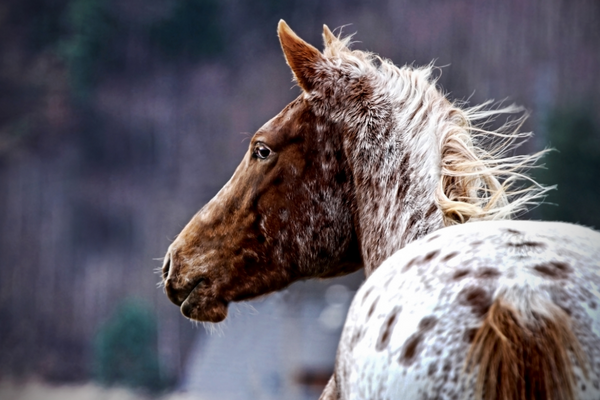American Mustang
America was built on the backs of horses. From transportation, to building the railroad, in times of war, and in times of peace, horses were an integral part of our history, and it all began with the American Mustang.
The word mustang is derived from the Spanish word mesteño meaning stray or ownerless horse.
The word has come to describe all wild horses in the United States.

About the American Mustang
The evolution of the modern horse occurred over a period of 50 million years.
The genus Equus originated in North America about 4 million years ago and spread to Eurasia before becoming extinct in North America.
Between 1500 and 1880, explorers began arriving in North America from Europe.
They brought horses with them, who were then left behind.
These abandoned horses spread northwest across the continent, essentially reintroducing wild horses to America.
Although they are wild, because mustangs are the descendants of domesticated horses, the Bureau of Land Management considers them “feral” rather than “wild.”
By the year 1900, mustangs’ numbers had quickly grown to over two million.
The huge spike in mustang numbers spurred ranchers to start killing them to protect range-land for their cattle.
It was also around this time that keeping house pets became more and more prevalent, which sparked the start of the dog food industry in the 1930s.

The dog food industry found a ready source of meat in America’s mustangs.
By the year 1970, it was believed that less than 17,000 mustangs remained roaming.
This sparked concern that the mustangs may be eliminated forever and led to the conservation efforts that have since been implemented.
Breed Characteristics
While the original mustangs were colonial spanish horses, the mustang has since been heavily influenced by many other breeds and types of horses.
Mustangs now come in many different shapes, sizes, and colors.
Mustangs may be of any coat color, but bay and sorrel are the most common.
Predominantly, mustangs are of light riding horse build, although some do show draft horse characteristics.
Modern mustangs are genetically isolated from other herds, this has led to distinct traits that are traceable back to particular herds.
Height varies from herd to herd, however, most mustangs are smaller, averaging around 14.2 hands, although you may see them as small as 13 hands or as large as 16 hands, but no larger than 16 hand.
This has been observed even in herds that have been influenced by draft or Thoroughbred ancestry.
It is believed this occurs due to the mustang’s harsh living conditions and the work of natural selection.
For mustangs who carry breed traits associated with the early Spanish horses, the American Mustang Association developed a breed standard.
This standard includes a well-proportioned body with a clean head with a wide forehead and small muzzle.
The withers are moderate in height with a long and sloping shoulder.
A short back, deep girth, and muscular coupling over the loins are desirable.
The croup is rounded, the tail is low-set, hooves are round and dense and legs are straight and sound.
Conservation
Throughout the beginning of the 20th century, ranchers, hunters, and “mustangers” played a major role in harvesting mustangs for commercial purposes in a ruthless and indiscriminate manner.
During the 1950s, “Wild Horse Annie” led a campaign fighting for the humane treatments of mustangs.
In January 1959, a bill prohibiting the use of motorized vehicles to hunt wild horses and burros on public land was introduced to congress.
The House passed the bill which became Public Law 86-234, also known as the Wild Horse Annie Act, on September 8th, 1959.
Although Annie had recommended that Congress initiate a program to protect, manage, and control wild horses, Public Law 86-234 did not include this.
As time passed, public interest and concern for wild horses and burros continued to mount, and with it came the realization that federal protection, management, and control of wild horses was essential.
This resulted in the 1971 Wild Free-Roaming Horse and Burro Act.
The Bureau of Land Management (BLM) and U.S. Forest Service manage wild horse herds.
Although the BLM struggled with herd management in many areas up first, in 1973 they began a program for rounding up excess mustangs and adopting them out to private owners.
While adoption remains the primary method of removing excess horses and burros from managed land, the adoption rate was not able to keep up with the removal rate.
Because of this, the first short-term and long-term pastures were created in 1988.
Off the range, there are nearly 42,000 wild horses and burros that are fed and cared for at short-term and long-term holding facilities.
Currently, horses and burros placed in long-term facilities live out the rest of their lives there.
The length of their stay depends entirely on the age at which they were rounded up.
In 2001, the Mustang Heritage Foundation was established.
The goal of this organization is to facilitate successful adoptions for excess American mustangs.
Since 2007, this organization has been able to place nearly 10,000 mustangs from holding facilities into private care through training and gentling programs.
The American Mustang has evolved over hundred of years to be the icon we know and love today.
Through conservation efforts and initiatives, we can continue to preserve these animals for future generations to enjoy.

Lauren is an internationally published author, trainer, and has helped hundreds of horse-rider combinations create lasting bonds and the success they desire. Check out Lauren’s incredible story: From horse-crazy girl to international equine educator. Or if you want to send Lauren a quick message, check out her contact page here.


